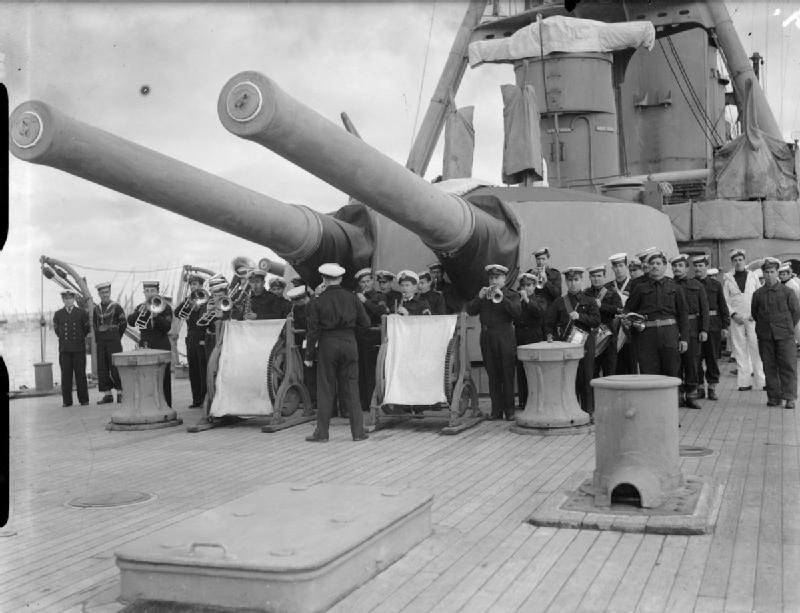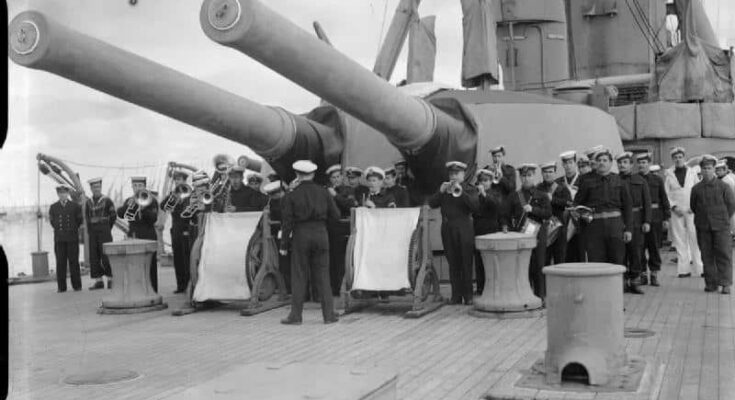
Greek mariners had been saying “Oxi” (no) to the Axis powers pretty much since the start of World War Two in 1939.
On October 28, Greeks around the world celebrate Oxi Day, commemorating the Greek government’s decision to resist the insulting Italian demand to open their borders to Mussolini’s Fascist hordes. In this, the Greek government fully expressed the will of the Greek people to resist any invasion of Greece’s borders.
At sea, Greece had the ninth largest merchant marine in the world at the outset of World War Two, with skilled captains and sailors and it performed a vital role in global seaborne commerce, both in peace and in wartime.
As an island with few resources, the British depended on seaborne supplies to wage war and to feed themselves. This lifeline was the target of the viciously accurate German u-boats from September 3rd 1939, the first day of the war.
Beyond its importance to global commerce, the Greek merchant marine was a vital and higher-paying employer to thousands of Greeks. It sent badly needed foreign currency home to a country that had endured the Asia Minor catastrophe less than two decades before.
The merchant marine absorbed a large proportion of Greek capital. That included both native and diaspora, and the network of Greek ships tied together a global Hellenic presence.
Greek mariners lost their lives in 1939
In September 1939, Britain and France went to war with Germany over the latter’s invasion of Poland. The war was “phony” on the Western Front until May 1940. It was real however at sea from the very first day.
Furthermore, even though Greece was neutral, her ships were not. Five Greek ships were sunk by U-Boats in the last three months of 1939. The first Greeks who died in World War Two were at sea, well before Greece was at war.
With the coming of 1940, the carnage continued. Greece remained neutral until attacked on October 28, 1940. Yet her ships bore the full brunt of German naval and airborne rage. Here too the numbers illustrate.
Greek ships are going down in Transatlantic runs. They are hitting mines in the English Channel or falling victim to German Stukas and bombers. France is overrun and the “Blitz” begins over Britain. After May 1940, Italy’s considerable navy goes into action.
While the most famous pre-war Greek naval casualty was the destroyer Elli, torpedoed by a cowardly Italian attack on August 15, 1940, before Greece entered the war, the Italians had picked off other Greek ships, and aside from the martyred sailors of the Elli, over 100 sailors died in 1940, before Greece entered the war. Greek ships were a vital part of the lifeline that kept the British island supplied when all seemed lost.
Greek Mariners fight after Oxi Day
After October 28, 1940, the carnage continued at sea. Greek forces crushed the Italian army on land and the navy inflicted a fair bruising in the Mediterranean.
Greek ships continued to fall victim to U-Boats and German aircraft, now based in occupied France. Again, the numbers tell a tale. Greek ships tended to be small and old, and rarely could outrun the deadly German subs. Often stragglers in convoys, the Germans would isolate and kill these ships.
With the new year 1941, the two-theater carnage continued. Greek ships were targets in the Atlantic and the Mediterranean. Germany invaded the Balkans to rescue Mussolini’s botched invasion of Greece and their air support obliterated dozens of Greek ships in Greek and Mediterranean ports. It also destroyed hundreds of smaller caiques plying between the mainland and islands.
My figures only cover those ships larger than 2,000 tons. However, the loss in Greek waters was near total and the Germans and Italians often commandeered local shipping that survived. These ships rarely returned to their owners. Instead, they ended up at the bottom of the sea.
In terms of total losses, 1941 was the worst year for Greek shipping. This was in large part due to the invasion of Greece and losses in the Mediterranean. 1942 in the Atlantic was the worst year for Allied shipping in aggregate. There were massive losses, often within sight of major seaports on the US Atlantic seaboard.
American statistics indicate service in the American Merchant Marine was more dangerous than any wartime service except the Marine Corps. Merchant mariners, however, did not get the accolades their brothers did in the armed services. Rather, American merchant mariners were not eligible for the GI Bill that educated millions of returning soldiers. Luckily Greece honoured both her sons in the military and in the merchant marine.
In the first few months of 1942 along the US Atlantic Coast, with an unprepared America unable to defend its vast Atlantic coastline, U-Boats sometimes surfaced and shelled their prey, apparently unconcerned that American warships or aircraft would appear.
Greek shipping suffered in turn. One Panamanian-registered Greek ship, the Halcyon, went down after being shelled about 500 miles off the North Carolina coast. My grandfather, Alexandros Billinis, the ship’s cook, did not survive the attack, one of tens of thousands that bloody year.

Sixty percent of the Greek merchant fleet was at the bottom of the sea
Greeks fought and died everywhere carrying the goods of war, from Germans and Italians, and even the random Japanese submarine, in the Pacific and Indian Oceans. By 1943, the American naval and air cover began to turn the tables on the Germans decisively. This helped significantly reduce Greek losses in 1942. The trend accelerated in 1944 and by 1945, the last year of the war, there were no Greek ships lost.
But what a carnage it was. In 1939, there were 404 Greek ships (aside from hundreds of smaller coastal craft). In 1939, only 159 were left. Over 200 ships were sunk, and another 39 were lost due to marine hazards, a condition exacerbated by wartime conditions.
Sixty percent of the Greek merchant fleet was at the bottom of various oceans and seas. Often as not, it was with their crews entombed. They kept the game going, sailing often unarmed against a deadly and ruthless enemy that did not respect neutrality or helpless sailors in the water.
Greeks died from the beginning protecting the supply lines, just as they would die in greater numbers—but not percentages—defending the nation’s honour in the mountains of Epirus and Albania. The Greek merchant mariners said their OXI from September 1939.
Almost 75 percent of Greek losses were in the Atlantic, supplying their British allies through the watery graveyard of the North Atlantic. Most of the rest of the losses were in the Mediterranean near the Greek homeland. Yet a smattering met a watery grave in the Indian and Pacific Oceans. Germans were responsible for about 85 percent of the carnage, although the Italians and Japanese did their deadly work on the rest.
Of the Allied nations, Greece was 5th in terms of losses in the Battle of the Atlantic, after Britain, the US, Norway, and the Netherlands.
Unlike the other four nations however, Greece was far poorer. While Norway lost more per capita than Greece, she was far richer and her war experience was far gentler than that suffered by Greece, notwithstanding these horrific losses.
For Greece, moreover, the war did not end in 1945. A fraternal tragic bloodletting killed more Greeks in battle than the World War Two battle casualties and lasted into late 1949.
The “Blessed” Liberty Ships

Yet phoenix-like, the Greeks returned even stronger. The US government, watching its ships slaughtered in the killing zone of the North Atlantic, embarked on a mass-shipbuilding program, combining the best of American industrial might and ingenuity.
On an assembly line scale, often in the space of just one month’s construction time, the Liberty Ships emerged on the scene. Welded, hardy, faster and larger than most ships of the era, the hulls of these ships carried the materials needed for the massive victory that would have been impossible without the might of American industry.
In a combination of self-interest and altruism, the ultimate win-win, the United States made the decision to sell off a portion of this huge and the now idle Liberty Ship fleet to Allied nations, all of which had suffered massive losses in the war. Terms were favorable and the price was cents on the dollar. Greek shipowners, among the world’s most skilled, with hardy, brave, and experienced crews, were the biggest buyers.
Over 500 ships, Greek- and convenience-flagged, marked the resurrection of this dynamic force in Greek and global economics and history. Having delivered tens of millions of tons of war material, and after the loss of over 2000 shipmates, these survivors and children of the World War Two generation, guys like my father, my uncle, and countless relatives, created a final number for this discussion.



